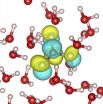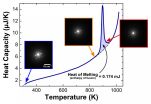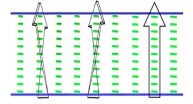Finally: A missing link between vitamin D and prostate cancer
2014-10-22
(Press-News.org) A University of Colorado Cancer Center study recently published in the journal Prostate offers compelling evidence that inflammation may be the link between Vitamin D and prostate cancer. Specifically, the study shows that the gene GDF-15, known to be upregulated by Vitamin D, is notably absent in samples of human prostate cancer driven by inflammation.
"When you take Vitamin D and put it on prostate cancer cells, it inhibits their growth. But it hasn't been proven as an anti-cancer agent. We wanted to understand what genes Vitamin D is turning on or off in prostate cancer to offer new targets," says James R. Lambert, PhD, investigator at the CU Cancer Center and associate research professor in the CU School of Medicine Department of Pathology.
Since demonstrating that Vitamin D upregulates the expression of GDF-15, Lambert and colleagues, including Scott Lucia, MD, wondered if this gene might be a mechanism through which Vitamin D works in prostate cancer. Initially it seemed as if the answer was no.
"We thought there might be high levels of GDF-15 in normal tissue and low levels in prostate cancer, but we found that in a large cohort of human prostate tissue samples, expression of GDF-15 did not track with either normal or cancerous prostate tissue," Lambert says.
But then the team noticed an interesting pattern: GDF-15 was uniformly low in samples of prostate tissue that contained inflammation.
"Inflammation is thought to drive many cancers including prostate, gastric and colon. Therefore, GDF-15 may be a good thing in keeping prostate tissue healthy – it suppresses inflammation, which is a bad actor potentially driving prostate cancer," Lambert says.
The study used a sophisticated computer algorithm to analyze immunohistochemical (IHC) data, a task that in previous studies had been done somewhat subjectively by pathologists. With this new technique, Lambert, Lucia and colleagues were able to quantify the expression of the GDF-15 protein and inflammatory cells by IHC staining on slides taken from these human prostate samples.
Additionally encouraging is that the gene GDF-15 was shown to suppress inflammation by inhibiting another target, NFkB. This target, NFkB, has been the focus of many previous studies in which it has been shown to promote inflammation and contribute to tumor formation and growth; however, researchers have previously been unable to drug NFkB to decrease its tumor-promoting behavior.
"There's been a lot of work on inhibiting NFkB," says Lambert. "Now from this starting point of Vitamin D in prostate cancer, we've come a long way toward understanding how we might use GDF-15 to target NFkB, which may have implications in cancer types far beyond prostate."
INFORMATION:
ELSE PRESS RELEASES FROM THIS DATE:
2014-10-22
Though it garners few public headlines, carbonic acid, the hydrated form of carbon dioxide, is critical to both the health of the atmosphere and the human body. However, because it exists for only a fraction of a second before changing into a mix of hydrogen and bicarbonate ions, carbonic acid has remained an enigma. A new study by Berkeley Lab researchers, has yielded valuable new information about carbonic acid with important implications for both geological and biological concerns.
Richard Saykally, a chemist with Berkeley Lab's Chemical Sciences Division and a professor ...
2014-10-22
When studying extremely fast reactions in ultrathin materials, two measurements are better than one. A new research tool invented by researchers at Lawrence Livermore National Laboratory (LLNL), Johns Hopkins University and the National Institute of Standards and Technology (NIST) captures information about both temperature and crystal structure during extremely fast reactions in thin-film materials.*
The combined device will help scientists study new materials and processes used to make advanced technologies, including state-of-the-art semiconductors and flat-screen ...
2014-10-22
Abandoned penguin chicks that were hand-reared and returned to the wild showed a similar survival rate to their naturally-reared counterparts, according to a study published October 22, 2014 in the open-access journal PLOS ONE by Richard Sherley from University of Cape Town and colleagues.
The Endangered African penguin population has been rapidly decreasing since 2001. In the Western Cape of South Africa, penguins breed from February to September and moult between September and January, once chicks have fledged. If adult penguins begin the moulting process, a 21 day ...
2014-10-22
Wild chimpanzees living in disturbed habitat may use innovative strategies, like foraging crops at night, to coexist with nearby human activities, according to a study published October 22, 2014 in the open-access journal PLOS ONE by Sabrina Krief from Muséum national d'histoire naturelle and colleagues.
People expanding land use for agriculture and other activities are increasingly encroaching on wild chimpanzee habitat. To understand how chimpanzees are adjusting, researchers used camera-traps to observe chimpanzee behavior during incursions out of the forest into ...
2014-10-22
VIDEO:
This video shows treatment with OTS964 induced cytokinetic defect with inter-cellular bridges that eventually led to cell apoptosis. Cell pictures were taken every 10 min.
Click here for more information.
A new drug, known as OTS964, can eradicate aggressive human lung cancers transplanted into mice, according to a report in Science Translational Medicine. The drug, given as a pill or by injection, inhibits the action of a protein that is overproduced by several tumor types, ...
2014-10-22
Males of great bustard consume small doses of poison with a dual purpose: to eliminate intern parasites and, especially, to look healthier and stronger before females, allowing them to achieve a greater reproductive success. A team of researchers from the Spanish National Research Council has now suggested for the first time that this function of self-medication could be a mechanism of sexual selection. The study results are published in the PLOS ONE journal.
Juan Carlos Alonso, who led the project, CSIC researcher at the Department of Evolutive Ecology of the Spanish ...
2014-10-22
A new study conducted by University of North Carolina School of Medicine researchers provides the first known evidence of how a similar acoustic characteristic in the cry sounds of human infants and rat pups may be used to detect the harmful effects of prenatal cocaine exposure on nervous system development.
"These findings are important because studies of prenatal drug exposure in humans are always limited by not knowing if infant nervous system damage was due to the effects of a specific drug, such as cocaine, or the effects of other associated factors, such as maternal ...
2014-10-22
Bright colours appear on a fruit fly's transparent wings against a dark background as a result of light refraction. Researchers from Lund University in Sweden have now demonstrated that females choose a mate based on the males' hidden wing colours.
"Our experiment shows that this newly-discovered trait is important in female choice in fruit flies, and is the first evidence that wing interference patterns have a biological signalling function between the sexes during sexual selection", said Jessica Abbott, a biologist at Lund University.
The extremely thin wings of the ...
2014-10-22
Following the study of a hospital that logged more than 2.5 million patient monitoring alarms in just one month, researchers at UC San Francisco have, for the first time, comprehensively defined the detailed causes as well as potential solutions for the widespread issue of alarm fatigue in hospitals.
Their study is in the Oct. 22 issue of PLOS ONE and available online.
The issue of alarm fatigue has become so significant that The Joint Commission, a national organization that accredits hospitals, named it a National Patient Safety Goal. This goal requires hospitals ...
2014-10-22
WASHINGTON, Oct. 22, 2014—At first glance, the static, greyscale display created by a group of researchers from the Hong Kong University of Science and Technology, China might not catch the eye of a thoughtful consumer in a market saturated with flashy, colorful electronics. But a closer look at the specs could change that: the ultra-thin LCD screen described today in a paper in The Optical Society's (OSA) journal Optics Letters is capable of holding three-dimensional images without a power source, making it a compact, energy-efficient way to display visual information.
Liquid ...
LAST 30 PRESS RELEASES:
[Press-News.org] Finally: A missing link between vitamin D and prostate cancer





